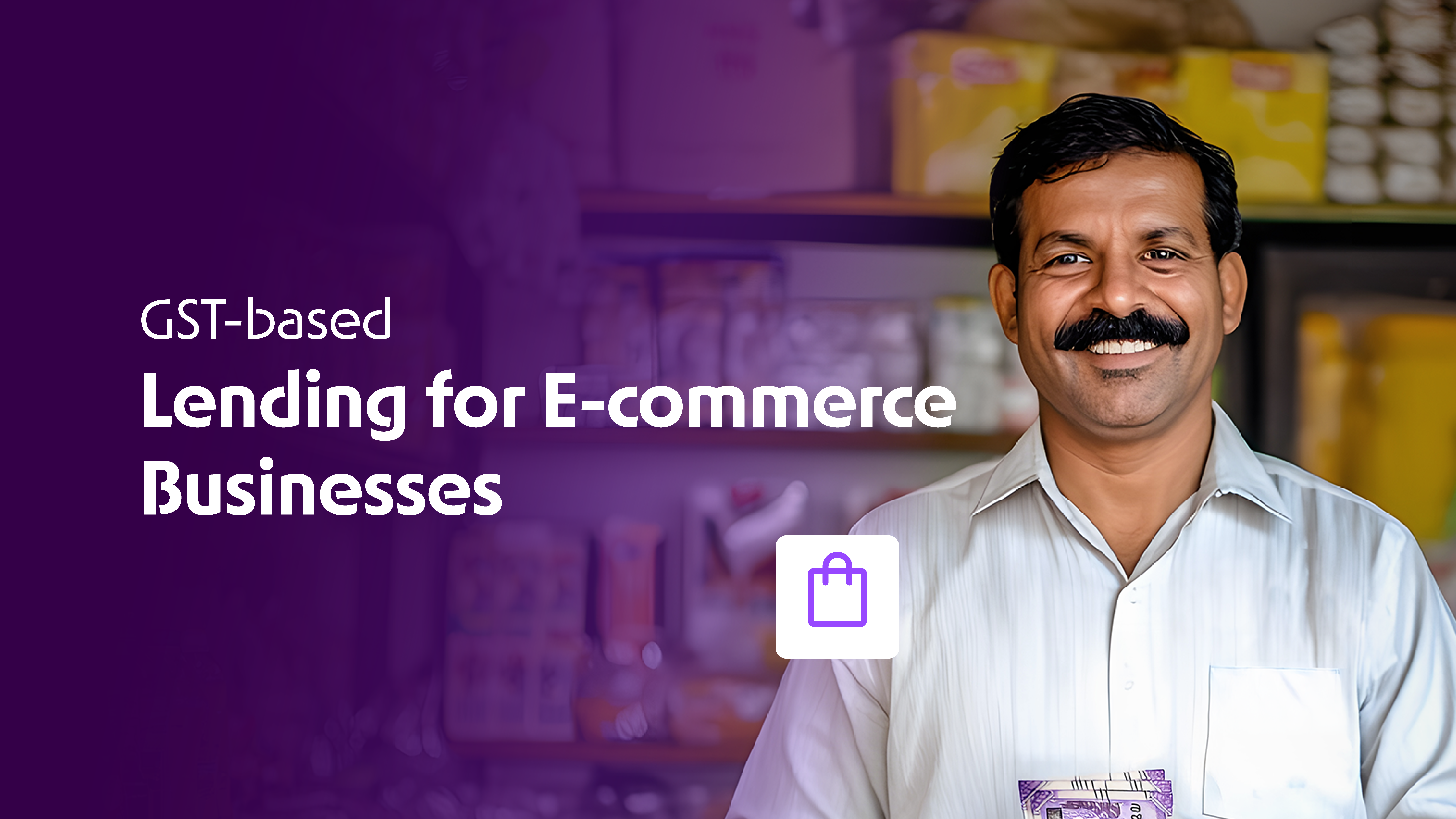Small businesses in the e-commerce space often find it hard to access credit through traditional channels. Most lack fixed assets for collateral or a long credit history. However, with the introduction of Goods and Services Tax (GST), a new avenue has opened up GST based lending.
This method uses GST return data as a proxy for business performance and creditworthiness. For e-commerce sellers, this is especially useful because it reflects real-time business activity turnover, tax discipline, and transaction volume without relying on traditional paperwork.
How GST Data Enables Lending
Under the GST regime, businesses registered under GST must file monthly, quarterly, or annual returns like GSTR-1 and GSTR-3B reporting sales, purchases, and tax liabilities.
For lenders, this offers valuable, verified data that includes:
- Monthly sales history via the bank statements.
- Frequency and punctuality of tax filing.
- Tax payments and input credit claimed.
- Sector-wise supply patterns.
These insights help lenders assess the borrower’s cash flow and creditworthiness without needing audited financials. With GST returns being digital and standardised across industries, it has become easier to build automated credit scoring models.
This is the foundation of GST-based financing, which is now offered by several NBFCs and fintech platforms.
Why It Works for E-commerce Sellers
1. Improved Access to Working Capital
Most small e-commerce businesses operate with tight cash cycles. Getting a working capital loan especially for inventory restocking or seasonal marketing is critical but difficult through traditional banks.
With GST data reflecting consistent turnover, even without physical collateral, businesses become eligible for e-commerce business loans from digital lenders.
2. Faster, Paperless Processing
Since GST returns are available via the GSTN (Goods and Services Tax Network), lenders can access them (with the borrower’s consent) using APIs. This reduces manual documentation and accelerates approval.
3. Dynamic Loan Sizing
Loan amounts can be matched to actual sales figures reported in GST filings. For example, if a seller reports ₹20 lakh in quarterly outward supplies, lenders may extend a line of credit proportional to it allowing flexible, demand-based borrowing.
Challenges in GST-Based Lending
While promising, GST-based lending has its limitations:
1. Filing Irregularities Can Affect Eligibility
Lenders look for consistent filing history typically 6 to 12 months of GSTR-3B filings. Irregular or skipped filings raise red flags and may result in loan rejection.
2. Seasonal Business Patterns Can Distort Risk Profiles
Many e-commerce sellers have uneven sales throughout the year. A lender evaluating only a 3-month GST record may not get the full picture of business health, leading to under-lending or higher interest rates.
3. GST Data May Not Reflect Full Business Volume
Some sellers may have cash sales or operate across multiple GSTINs or platforms. Unless integrated, this data may be fragmented and not reflect the business’s true scale.
4. Policy-Driven Risks
Changes in GST rules such as return formats, filing frequency, or portal downtimes can affect the reliability of data. For example, delays in GSTR-2B or mismatches in input/output tax can lead to compliance hiccups.
How Sellers Can Stay Credit-Ready
If you’re an online seller looking to benefit from GST-based financing, here’s what you can do:
- File GSTR-1 and GSTR-3B on time, even if there are nil transactions. Consistency is key.
- Reconcile returns regularly, especially input tax credits (ITC), to avoid mismatches.
- Use accounting tools that integrate with GSTN to automate your filings and keep records clean.
- Keep business banking and GST registrations aligned, so your digital footprint is easier for lenders to verify.
These steps not only improve loan eligibility but also help avoid penalties and disruptions in supply chains.
Conclusion
GST-based lending is more than a compliance-driven innovation, it’s a meaningful shift in how digital businesses access credit. By relying on real-time tax data, it reduces paperwork, improves turnaround time, and brings underserved sellers into the formal credit ecosystem.
For e-commerce businesses, this creates a chance to fund growth using the data they already generate. But like any form of lending, it works best when sellers maintain clean records, stay compliant, and adopt digital-first practices.
As fintech infrastructure matures and more lenders adopt GST-led underwriting, this model will likely evolve into a core part of the e-commerce business loans landscape.



